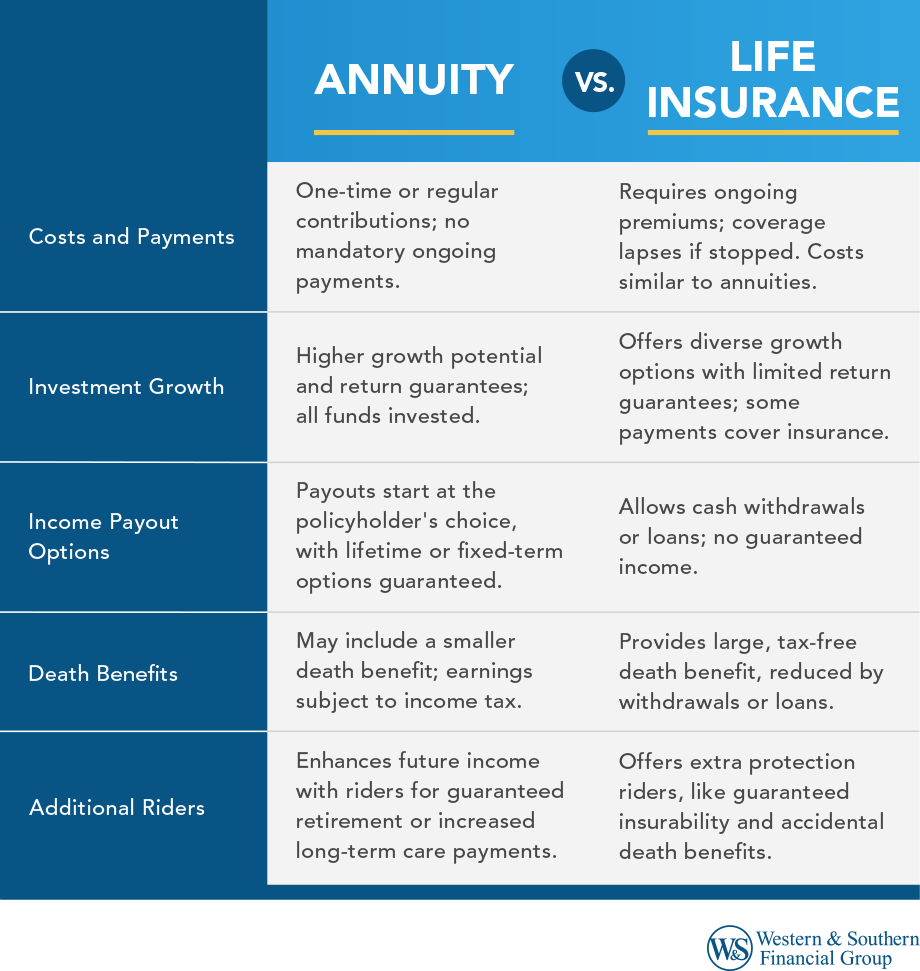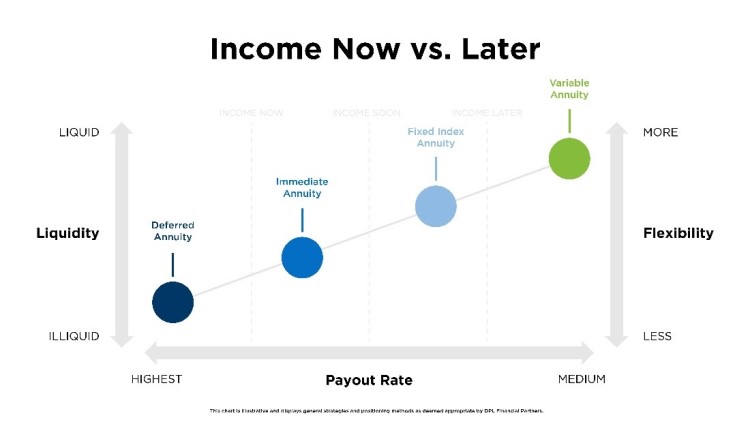All Categories
Featured
Table of Contents
Just as with a dealt with annuity, the owner of a variable annuity pays an insurance company a swelling amount or collection of repayments for the guarantee of a collection of future settlements in return. As pointed out above, while a repaired annuity grows at a guaranteed, consistent price, a variable annuity expands at a variable rate that depends upon the performance of the underlying financial investments, called sub-accounts.

During the accumulation stage, assets purchased variable annuity sub-accounts expand on a tax-deferred basis and are exhausted just when the contract owner withdraws those earnings from the account. After the buildup phase comes the earnings phase. Over time, variable annuity properties must in theory raise in value till the contract owner chooses he or she wish to start taking out cash from the account.
The most considerable concern that variable annuities usually present is high price. Variable annuities have numerous layers of charges and expenditures that can, in accumulation, produce a drag of as much as 3-4% of the contract's worth every year. Below are one of the most usual costs linked with variable annuities. This expenditure makes up the insurer for the threat that it presumes under the terms of the contract.
Breaking Down Retirement Income Fixed Vs Variable Annuity A Comprehensive Guide to Tax Benefits Of Fixed Vs Variable Annuities What Is the Best Retirement Option? Pros and Cons of Various Financial Options Why Choosing the Right Financial Strategy Can Impact Your Future How to Compare Different Investment Plans: Simplified Key Differences Between Different Financial Strategies Understanding the Rewards of Long-Term Investments Who Should Consider Fixed Vs Variable Annuity Pros Cons? Tips for Choosing Fixed Vs Variable Annuity FAQs About Planning Your Financial Future Common Mistakes to Avoid When Choosing a Financial Strategy Financial Planning Simplified: Understanding What Is A Variable Annuity Vs A Fixed Annuity A Beginner’s Guide to Smart Investment Decisions A Closer Look at How to Build a Retirement Plan
M&E expenditure fees are computed as a percentage of the contract value Annuity issuers pass on recordkeeping and various other administrative expenses to the agreement proprietor. This can be in the type of a flat yearly charge or a percentage of the contract worth. Management costs might be consisted of as part of the M&E threat fee or may be evaluated independently.
These fees can range from 0.1% for easy funds to 1.5% or even more for proactively taken care of funds. Annuity agreements can be customized in a number of ways to serve the particular demands of the agreement owner. Some common variable annuity bikers include assured minimum buildup advantage (GMAB), guaranteed minimum withdrawal advantage (GMWB), and assured minimum income benefit (GMIB).

Variable annuity payments give no such tax reduction. Variable annuities have a tendency to be highly ineffective automobiles for passing wealth to the following generation because they do not take pleasure in a cost-basis adjustment when the initial contract owner passes away. When the proprietor of a taxed financial investment account passes away, the cost bases of the investments kept in the account are gotten used to show the market costs of those financial investments at the time of the proprietor's death.
Exploring the Basics of Retirement Options A Comprehensive Guide to Investment Choices Breaking Down the Basics of Fixed Annuity Vs Variable Annuity Features of Smart Investment Choices Why Choosing the Right Financial Strategy Is Worth Considering Fixed Income Annuity Vs Variable Growth Annuity: Explained in Detail Key Differences Between Fixed Annuity Vs Equity-linked Variable Annuity Understanding the Risks of Fixed Annuity Vs Variable Annuity Who Should Consider Strategic Financial Planning? Tips for Choosing the Best Investment Strategy FAQs About Fixed Annuity Or Variable Annuity Common Mistakes to Avoid When Choosing a Financial Strategy Financial Planning Simplified: Understanding Pros And Cons Of Fixed Annuity And Variable Annuity A Beginner’s Guide to Pros And Cons Of Fixed Annuity And Variable Annuity A Closer Look at How to Build a Retirement Plan
Successors can acquire a taxed investment portfolio with a "tidy slate" from a tax obligation viewpoint. Such is not the instance with variable annuities. Investments held within a variable annuity do not obtain a cost-basis modification when the original owner of the annuity dies. This suggests that any kind of collected latent gains will be passed on to the annuity owner's beneficiaries, in addition to the linked tax burden.
One substantial issue associated with variable annuities is the possibility for disputes of rate of interest that might exist on the component of annuity salesmen. Unlike an economic advisor, who has a fiduciary duty to make investment choices that benefit the customer, an insurance coverage broker has no such fiduciary commitment. Annuity sales are very lucrative for the insurance professionals who sell them due to the fact that of high ahead of time sales payments.

Lots of variable annuity agreements consist of language which positions a cap on the percent of gain that can be experienced by certain sub-accounts. These caps avoid the annuity proprietor from totally taking part in a portion of gains that can or else be enjoyed in years in which markets create significant returns. From an outsider's perspective, it would appear that capitalists are trading a cap on financial investment returns for the aforementioned guaranteed floor on investment returns.
As kept in mind over, surrender costs can severely restrict an annuity owner's ability to relocate properties out of an annuity in the early years of the agreement. Even more, while most variable annuities permit agreement proprietors to take out a defined amount throughout the buildup phase, withdrawals beyond this quantity normally result in a company-imposed cost.
Withdrawals made from a fixed rate of interest price investment choice might additionally experience a "market worth change" or MVA. An MVA adjusts the worth of the withdrawal to show any kind of modifications in rates of interest from the time that the cash was bought the fixed-rate choice to the moment that it was withdrawn.

On a regular basis, even the salesmen that offer them do not completely understand how they work, therefore salesmen in some cases take advantage of a customer's emotions to market variable annuities instead of the values and suitability of the items themselves. We think that capitalists should fully comprehend what they own and just how much they are paying to own it.
Highlighting the Key Features of Long-Term Investments A Comprehensive Guide to Variable Vs Fixed Annuities Breaking Down the Basics of Deferred Annuity Vs Variable Annuity Benefits of Choosing the Right Financial Plan Why Choosing the Right Financial Strategy Is a Smart Choice How to Compare Different Investment Plans: Simplified Key Differences Between Different Financial Strategies Understanding the Rewards of Variable Vs Fixed Annuities Who Should Consider Fixed Indexed Annuity Vs Market-variable Annuity? Tips for Choosing Indexed Annuity Vs Fixed Annuity FAQs About Annuity Fixed Vs Variable Common Mistakes to Avoid When Choosing a Financial Strategy Financial Planning Simplified: Understanding Fixed Vs Variable Annuities A Beginner’s Guide to Tax Benefits Of Fixed Vs Variable Annuities A Closer Look at How to Build a Retirement Plan
Nevertheless, the same can not be said for variable annuity possessions kept in fixed-rate financial investments. These properties lawfully come from the insurance provider and would certainly therefore go to threat if the firm were to fail. Similarly, any assurances that the insurance provider has accepted provide, such as an ensured minimal revenue benefit, would remain in concern in the event of an organization failure.
As a result, prospective purchasers of variable annuities must comprehend and consider the financial condition of the providing insurance policy firm before becoming part of an annuity contract. While the advantages and drawbacks of various kinds of annuities can be questioned, the genuine issue bordering annuities is that of suitability. Put merely, the inquiry is: that should own a variable annuity? This inquiry can be challenging to respond to, provided the myriad variations readily available in the variable annuity universe, yet there are some basic guidelines that can aid investors decide whether or not annuities must play a function in their economic strategies.
As the claiming goes: "Purchaser beware!" This article is prepared by Pekin Hardy Strauss, Inc. Variable annuity fees and expenses. ("Pekin Hardy," dba Pekin Hardy Strauss Riches Monitoring) for informational purposes just and is not planned as a deal or solicitation for service. The info and information in this write-up does not make up legal, tax obligation, accountancy, financial investment, or other specialist guidance
Table of Contents
Latest Posts
Exploring Tax Benefits Of Fixed Vs Variable Annuities A Closer Look at How Retirement Planning Works Breaking Down the Basics of Variable Annuities Vs Fixed Annuities Pros and Cons of Various Financia
Highlighting Indexed Annuity Vs Fixed Annuity Key Insights on Your Financial Future What Is Variable Annuity Vs Fixed Annuity? Advantages and Disadvantages of Variable Annuity Vs Fixed Annuity Why Cho
Highlighting Retirement Income Fixed Vs Variable Annuity A Comprehensive Guide to Investment Choices Breaking Down the Basics of Annuity Fixed Vs Variable Advantages and Disadvantages of Different Ret
More
Latest Posts